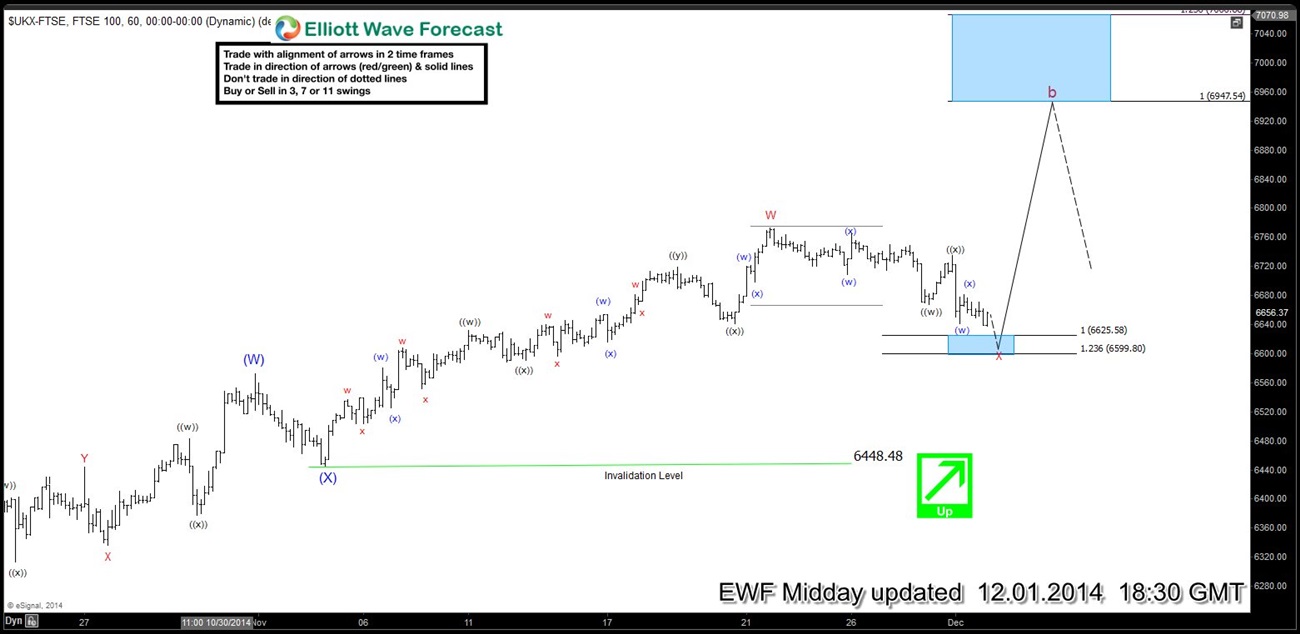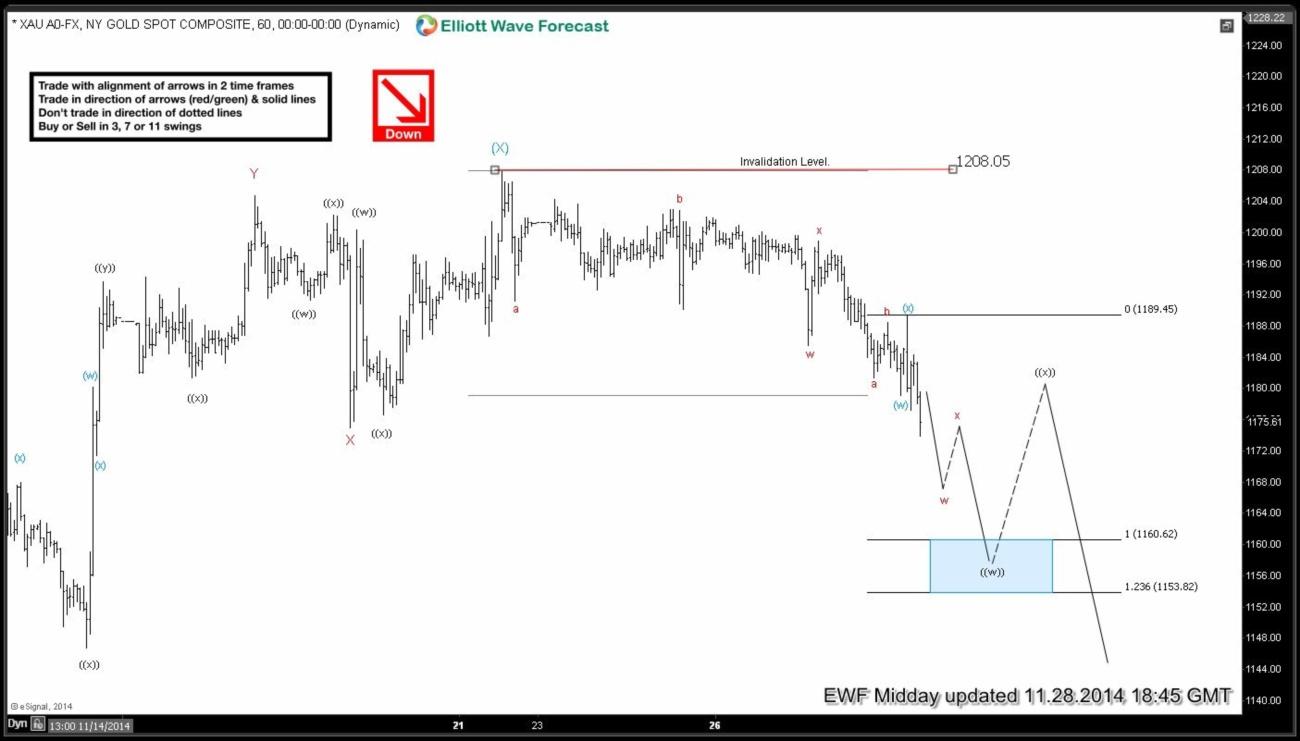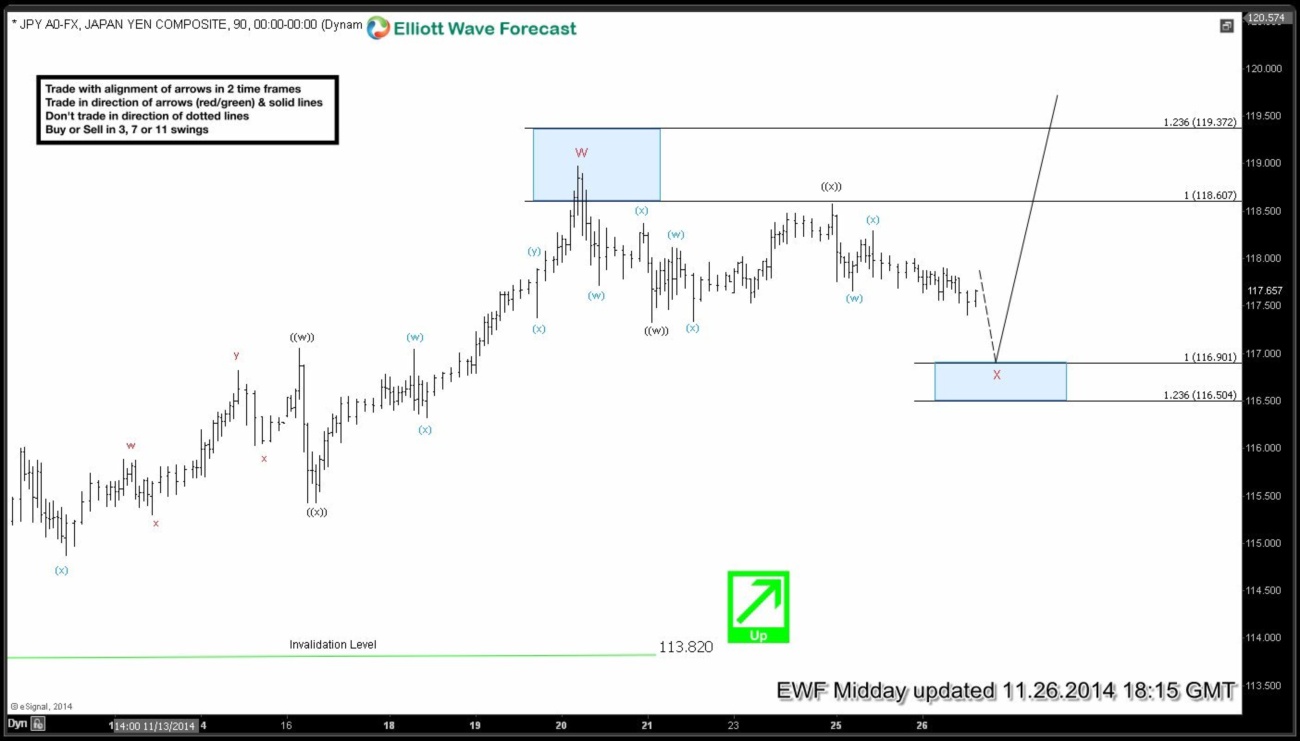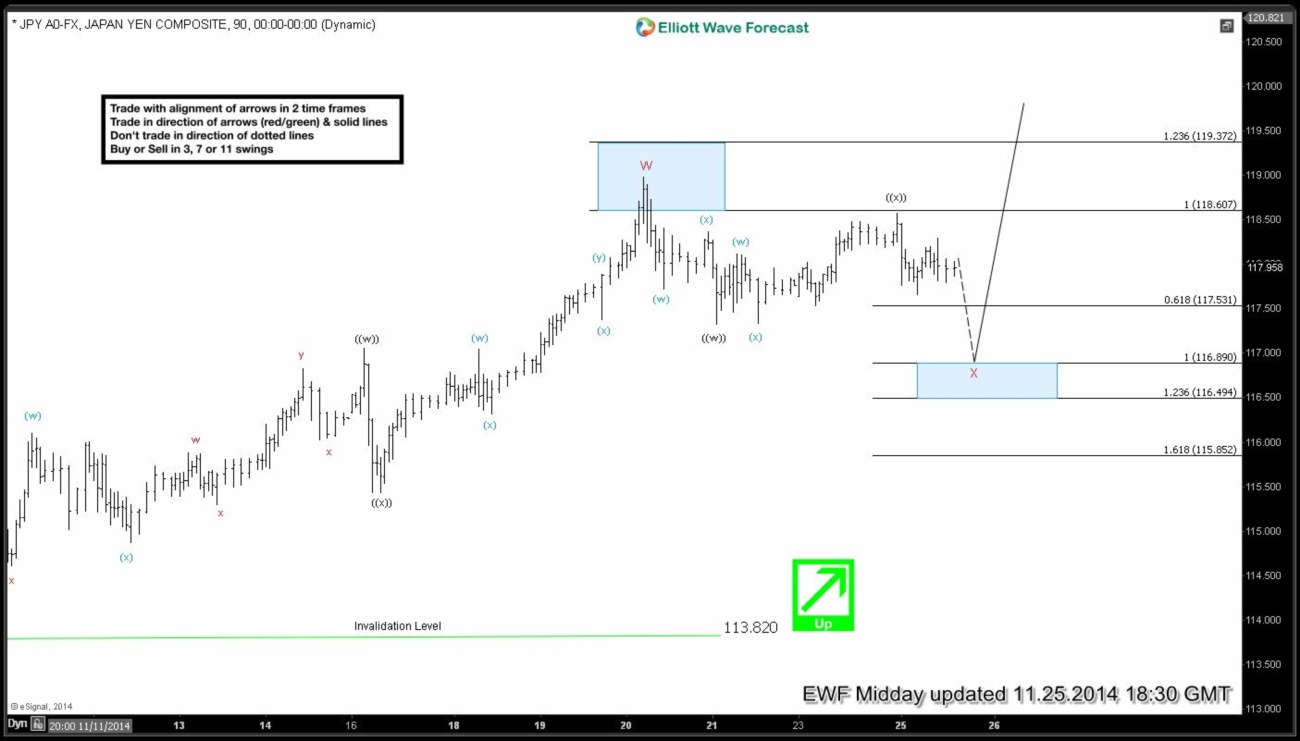
-

Gold: Elliott Wave Hedging
Read MoreGold dropped at start of the week and then rallied sharply. Let’s take a look at where the yellow metal stands right now. We know commodities are in the process of ending big cycles but there is no confirmation that the cycles has ended. Decline from July peak in Gold is not a 5 wave […]
-

FTSE Short-term Elliott Wave Analysis 12.1.2014
Read MoreIndex has been trending higher since forming a secondary low at 6448 i.e. wave (X). It has tested 0.618 – 0.764 ext area of (W)-(X) and has completed wave W of ( Y) at 6773. Wave “X” pull back is in progress as a 7 swing Elliott wave structure. Levels of interest on the downside are […]
-

$XAUUSD (Gold) Short-term Elliott Wave Analysis 11.28.2014
Read MoreYellow metal has resumed the decline as expected and yesterday our system confirmed that cycle from 1131 low had ended and that wave ( X ) high should have been in place at 1208.We are beginning to see more confirming price action for that today. We think we have seen a short-term connector wave (x) […]
-

USDJPY Short-term Elliott Wave Analysis 11.26.2014
Read MoreDaily cycle in the pair is very stretched and a decent pull back could start at any moment but there is no confirmation yet that daily cycle has ended so trading strategy in the shorter cycles is still to buy the dips in the sequence of 3, 7 and 11 swings. Pair has already done […]
-

USDJPY Short-term Elliott Wave Analysis 11.25.2014
Read MoreDaily cycle in the pair is very stretched and a decent pull back could start at any moment but there is no confirmation yet that daily cycle has ended so trading strategy ns the shorter cycles is still to buy the dips in the sequence of 3, 7 and 11 swings. Pair has already done […]
-

USDJPY Elliott Wave Setup Video
Read MoreWe take a look at USDJPY in today’s video. Daily cycle in the pair is very stretched and a decent pull back could start at any moment but there is no confirmation yet that daily cycle has ended so trading strategy in the shorter cycles is still to buy the dips in the sequence of […]